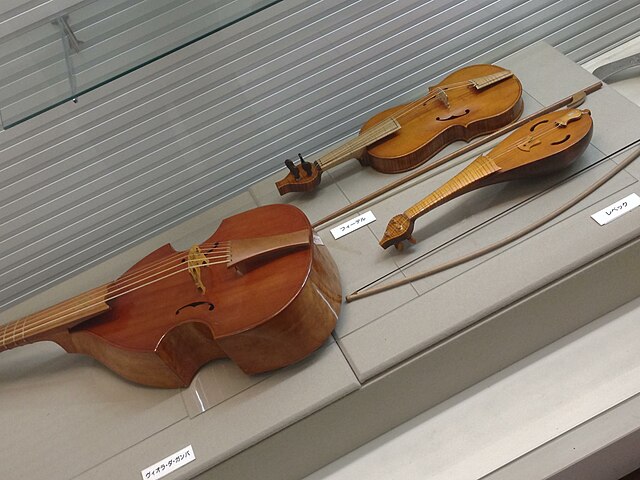The hurdy-gurdy is a string instrument that produces sound by a hand-crank-turned, rosined wheel rubbing against the strings. The wheel functions much like a violin bow, and single notes played on the instrument sound similar to those of a violin. Melodies are played on a keyboard that presses tangents—small wedges, typically made of wood or metal—against one or more of the strings to change their pitch. Like most other acoustic stringed instruments, it has a sound board and hollow cavity to make the vibration of the strings audible.
Hurdy-gurdy
Ancient kings playing an organistrum at the Pórtico de la Gloria in the Catedral de Santiago de Compostela in Santiago de Compostela, Spain
Hurdy-gurdy player in Saint-Jean-des-Ollières, Puy-de-Dôme (France)
Detail of The Garden of Earthly Delights by Hieronymus Bosch, showing the first known depiction of a buzzing bridge on a hurdy-gurdy
In musical instrument classification, string instruments or chordophones, are musical instruments that produce sound from vibrating strings when a performer plays or sounds the strings in some manner.
Bow Harp or Harp Lute, West Africa
Hellenistic banquet scene from the 1st century AD, Hadda, Gandhara. Lute player far right.
Spanish stele of a boy with a pandura.
Viol, fidel and rebec (from left to right) on display at Amakusa Korejiyokan in Amakusa, Kumamoto, Japan








